
Using this image from Lac due Flambeau Ojibwe guides our understanding of a traditional diet. This is just one way of showing the seasonality, variety, cycles and foods available, as well as the use of plants and animals beyond food.
As we know there is more than one way to eat a traditional diet, because it is based on the lands and waters surrounding us. That said, there are common benefits to following the parts of a traditional Anishnawbe diet.
Following a traditional diet offers many benefits to our well being. Here are a few:
Social Connections: eating in a traditional way provided opportunity for people to share and come together to gather, hunt, prepare and eat food.
Cultural Strength: sharing, teaching and learning together kept the ties to Anishnawbe culture strong.
Spiritual Wellness: participating in food ceremonies, hunting and gathering in a respectful way and the connection to the Earth and Creator is essential to maintain spiritual connectedness.
Nutrition: traditional foods tend to be higher in vitamins and minerals, they are also lower in salt, fat and sugar. In general, a traditional diet is higher in protein, low in carbohydrate and contains a moderate amount of fat.
Let’s dive into the nutrition of a traditional diet in a bit more detail.
- Breastmilk
- Breastmilk was the first food for all children
- Provides complete nutrition for up to 6 months of life
- Breastfeeding is shown to:
- pass the mothers healthy immunity cells to baby,
- reduce risk of ear, chest and stomach infections,
- support healthy brain development,
- support healthy gut development,
- reduce risk of obesity and diabetes,
- support proper jaw development and strength, and
- connect babies with mothers, improving instinct response to the baby
- Water
Water is essential to life. Water was the only beverage and was also used to make teas and medicines. Water allows our bodies to stay cool in hot weather, to digest foods, and eliminate waste.
- Plant Foods
Colour gives us clues about nutrients found in the food and choosing a wider variety of colour means we get more complete nutrition
- .Dark green: fiddle heads, moss and lichen, dandelion leaves, teas made from leaves. Contain vitamin A, iron, calcium, and fibre.
- Yellow, orange, red: rosehips, chokecherries, strawberries, raspberries, edible flowers, crabapples, teas made from berries and fruits. Contain folate, vitamin C, fibre, and B vitamins.
- Purple: blueberries, juniper berries. Contains antioxidants, vitamin C, fibre, folate, magnesium, and riboflavin
- White, brown: dandelion and other roots and shoots, mushrooms, wild rice, grasses (cattails), wild onion. Contains fibre, potassium, iron and some carbohydrate (starch).
If not eaten, plant foods may have been consumed as a tea.
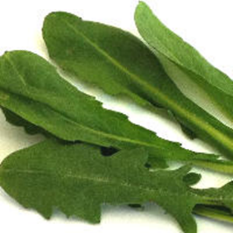
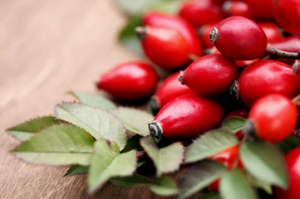
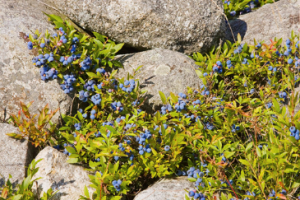
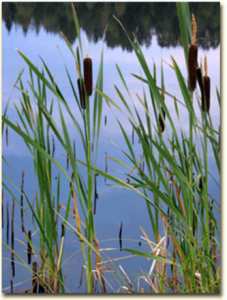
- Plant Food Concerns:
- pesticide or other sprays used nearby, or water run-off from spray areas
- road traffic
- other pollutants
- access to harvesting areas
- decreasing knowledge to harvest and prepare
- Some Solutions:
- check to make sure contaminants (sprays, pesticides) are not a concern in your region (contact Ministry of Natural Resources), and learn the water flow into harvesting grounds
- stay away from roadsides / use barrier materials
- wash foods well
- join group harvesting with leaders or develop gardens
- Animal Foods
Fish (bass, whitefish, pickerel, trout, smelts, Lake salmon, perch etc): Contain protein, iron, omega 3 fats, calcium, vitamin D (from fish bones!), magnesium, potassium, and vitamin A
Birds and Eggs (goose and duck): Contain protein, omega 3 and 6 fats, iron, B vitamins, calcium, vitamin D, folate, and vitamin A
Small Game (rabbit, hare, squirrel, beaver, muskrat): Contain protein, iron, vitamin A, and B vitamins.
Large Game (lynx, deer, caribou, moose): Contain protein, iron, zinc plus a wide variety of nutrients depending on the part of the animal that was consumed.
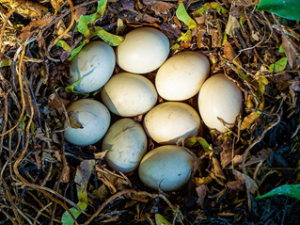
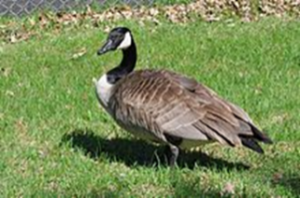
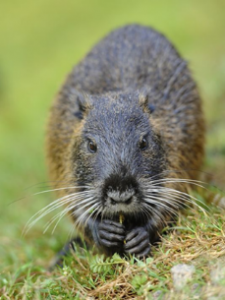
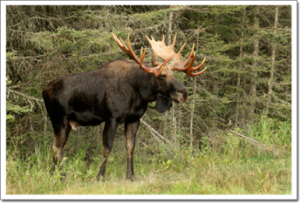
- Animal Food Concerns:
- polluted waterways, lead contamination, pesticide residue, heavy metal contamination
- Some Solutions:
- avoid large, predatory fish, and predatory fish-eating birds (ie: loon)
- avoid skin and organs where more contaminants are stored
- practice safe food handling of all meats (ie: cooking thoroughly)
- use steel shot or snare vs lead shot
- look up amounts and sizes of fish safe to consume https://www.ontario.ca/page/eating-ontario-fish-2017-18#section-10
Summary
- Getting out on the land is part of our northern way of life. It is great way to be active.
- Connect with the Earth and Creator to appreciate and honour food and water.
- However there are many challenges. If you are not able to eat traditional foods, practice the basics of eating in a traditional way:
- Breastfeed your children.
- Slow down when you eat.
- Remove phones, tablets, computers, laptops and TVs.
- Eat together and cook together.
- Eat in restaurants less.
- Cook in traditional ways: boiling, drying, smoking, making stews and soups.
- Eat less sugars, add quality protein and whole plant foods every day if you can
- And eat the rainbow!
- Learn and Share
- Preparing and harvesting
- Community hunts, de-boning or skinning shacks, community freezers
- Learn from others: Elders, other communities, networking
References and for more information:
Best Start Resource Centre. (2013). Breastfeeding matters (Section 1, page 3). Retrieved from https://www.beststart.org/resources/breastfeeding/pdf/BreastfeedingMatters_2013_low_rez_reference.pdf
Chan, L., Receveur, O., Batal, M., David, W., Schwartz, H., Ing, A.,…Tikhonov, C. (2014). First Nations food, nutrition and environment study (FNFNES): Results from Ontario (2011/2012). Ottawa, Ontario: University of Ottawa. Retrieved from http://www.fnfnes.ca/docs/FNFNES_Ontario_Regional_Report_2014_final.pdf
Earle, Lynda. (2013). Traditional Aboriginal diets and health. National Collaborating Centre for Aboriginal Health. Retrieved from https://www.ccnsa-nccah.ca/docs/emerging/FS-TraditionalDietsHealth-Earle-EN.pdf
First Nations Health Authority. (no date). First Nations traditional foods fact sheets. Retrieved from http://www.fnha.ca/documents/traditional_food_fact_sheets.pdf
Government of Ontario. (2017). Eating Ontario fish 2017-18. Retrieved from https://www.ontario.ca/page/eating-ontario-fish-2017-18
Health Canada. (1994). Native foods and nutrition: An illustrated reference manual. Minister of Supply and Services Canada.
Hunt, D. (Ed.). (1997). Native Indian wild game, fish and wild foods cookbook. Lancaster, Pennsylvania: Fox Chapel Publishing.
Johnson, B.G. (no date). Ojibwe food seasonal cycle. Retrieved from https://www.feastbythebay.org/ojibwe-food-traditions.html
Wabano Centre for Aboriginal Health. (no date). Water: Our First Medicine. Retrieved from http://wabano.com/wp-content/uploads/2015/10/Wabano-Water_English-1.pdf
